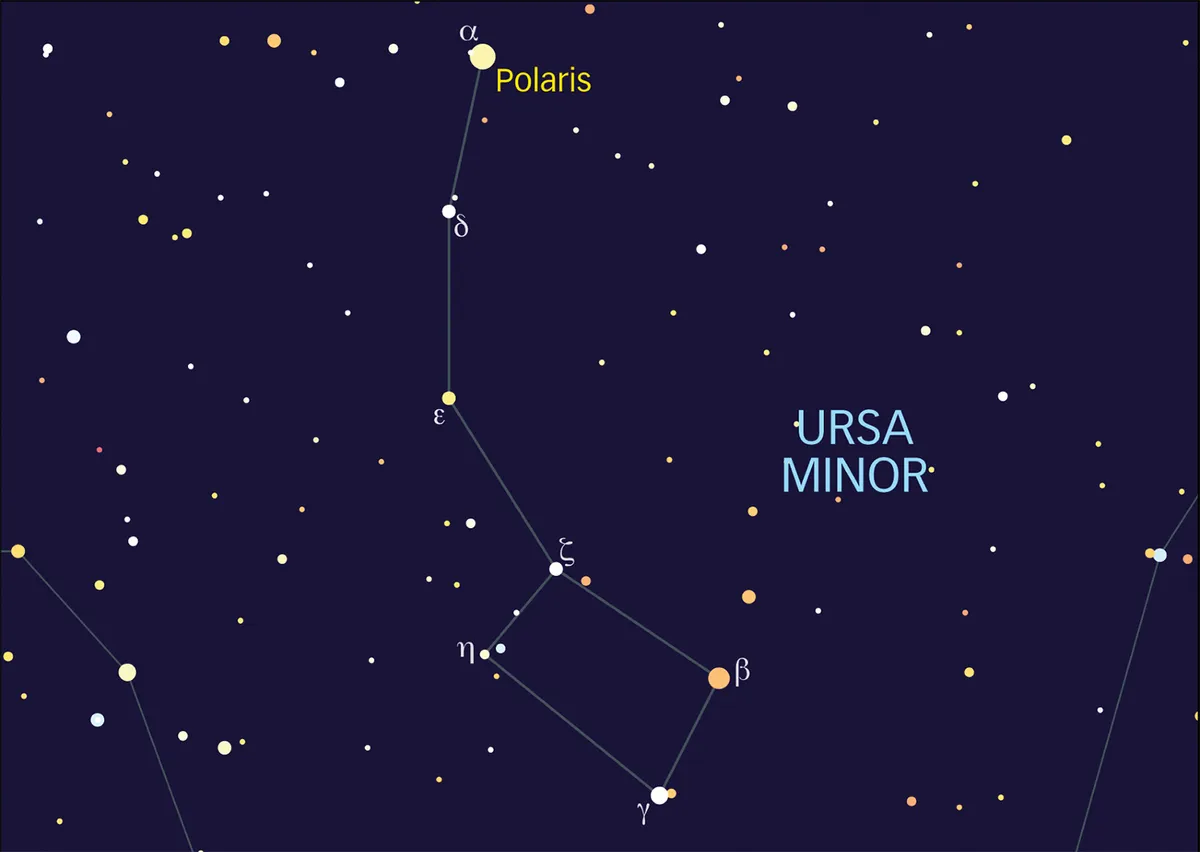Stellar magnitude is the astronomical system used to discern and describe the brightness of a stars relative to other objects in the night sky.
Even to casual stargazers it’s pretty obvious that the stars are of differing brightness.
Astronomers always like to catalogue and classify objects in the sky, and the brightness of stars is no exception.
Development of stellar magnitude
Over 2,000 years ago, the Greek astronomer Hipparchus devised the system we use for describing the brightness of stars and other celestial objects, called the magnitude scale.
In Hipparchus’s magnitude scale, the brightest stars were known as first magnitude and the faintest stars were sixth magnitude.
So why do brighter stars have a lower magnitude, and dimmer stars have higher magnitude?
Hipparchus gave a higher number to the faintest stars, which sounds a little topsy-turvy until you swap the word ‘magnitude’ for the word ‘class’.

See them as ‘first class’ stars, ‘second class’ stars and so on as the stars get fainter, putting the scale into perspective.
At the brighter end of the scale, magnitudes become a little awkward as some stars and other objects are brighter than first magnitude.
Our modern system is more accurate, with the mathematical difference between one magnitude and the next being about 2.5 times in brightness.
This means a first magnitude star is around 100 times brighter than a sixth magnitude star.
Stellar magnitude reference guide
| Celestial object | Magnitude |
|---|---|
| The Sun | -27 |
| Full Moon | -12 |
| Venus (at brightest) | -4.4 |
| Arcturus | -0.04 |
| Vega | +0.03 |
| Polaris | +1.99 |
| Pluto | +13.9 |
Stellar magnitude guide
| Stellar magnitude | Observing conditions |
|---|---|
| +3.0 | Faintest stars visible, light-polluted urban sky |
| +6.5 | Faintest stars visible, dark-sky site |
| +9.5 | Faintest stars visible, 10x50 binoculars |
| +30 | Faintest stars visible, Hubble Space Telescope |

Today we include all objects in the sky, not just those visible to the naked eye, and have shuffled some of the stars around.
For instance, a few stars have jumped into a higher brightness magnitude than 1. Indeed, the star Vega has the magical magnitude of zero.
And the confusion does not end there, for stars can pass zero into brighter magnitudes where the numbers become negative. Take Sirius, the brightest star in the night sky, which is mag. –1.4.
All this magnitude information only tells us how bright an object looks to us in the sky: its apparent, or visual, magnitude.
This doesn’t tell us anything about how bright the object really is, because all the things in space are at various distances from us.
So a very dim star might be just a very long way away and actually be very bright, and vice versa.
There are also the distorting effects of Earth's atmosphere to take into consideration, which is also the reason why stars twinkle.

Ancient Greeks like Hipparchus knew nothing about these great distances, and indeed neither do we when we stargaze – everything looks like it sits on a great celestial sphere around us.
If you could line up all the stars at the same distance away from us then we could see exactly how they differ in brightness.
Our modern technology has actually allowed us to do this, and we can now theoretically line up all objects at a certain distance (32.6 lightyears) to get their true or absolute magnitude.
Once you start comparing the difference between a star’s absolute and apparent magnitudes, you’ll be even more amazed just how big space is.
Brightest objects in the sky
A look at the brightest celestial objects, in order of brightness.
- The Sun mag -26.7 as seen from Earth
- The Moon mag. -12.6 when at full Moon
- Venus mag. -4.7 when at its brightest
- Mars mag. -2.9 when at its brightest
- Jupiter mag. -2.9 when at its brightest
- Mercury mag. -1.9 when at its brightest
- Sirius mag. -1.4 the brightest star in the night sky
- Canopus mag. -0.7 the second brightest star in the night sky
- Saturn mag. -0.3 when at its brightest
- Alpha Centauri mag. -0.01 leading star in the constellation Centaurus
Reading stellar magnitude on a star chart
Sometimes people say that a star is really big. Of course all stars are so far away that they only ever appear as points of light to your eye.
It’s what your eye does with that dot that can make them seem bigger.
In fact, drawing bigger dots is the only way of showing the difference in stars’ brightnesses on a star chart.
The brighter stars have the biggest dots.There will generally be a key to the dots and what magnitude they represent nearby.
It’s a good idea to get acquainted with the faintest stars you can see in your usual night sky: your magnitude limit.
Take a star chart and look for the smallest dots (the faintest stars) close to, or in a recognisable constellation and see if they’re visible in the sky.
Then you’ll know how much your viewing pleasure is affected by light pollution.

How to estimate stellar magnitude
The first step in learning how to estimate magnitudes is to make sure you know what you’re looking at.Print out a detailed star chart showing star magnitudes near your chosen star from planetarium software such as Redshift.
You need to identify the field of view correctly.When you’ve got to grips with what you’re looking at, use your chart printout to find two stars in the same field of view as the one you’re interested in, to compare it against.
These ‘comparison stars’ need to be on either side of your target star in terms of brightness – one brighter and one fainter.
You also need to make sure that both comparison stars are not variable stars, which change in brightness.

Now decide how bright your target star is when compared to the two comparison stars.
Is it halfway between them, or is it somewhere else in between, being of a more similar brightness to one than the other?
Use your own judgement and be consistent in how you make your comparisons.
Once you’ve decided, it’s time to put a figure on the target star’s magnitude in comparison to your two other stars. Look up the magnitudes of the comparison stars on your star chart.
Knowing this will help you make a reasonable estimate of your target star’s magnitude.
Let’s say the two comparison stars are of magnitudes +4.0 and +3.0.If the target star is two-thirds of the way from the faintest star to the brightest, this gives you an estimated magnitude of about +3.3.
Don’t worry if you’re a little unsure; practice makes perfect.

